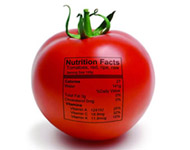Nutrition and Health Sciences, Department of

Department of Nutrition and Health Sciences: Faculty Publications
Document Type
Article
Date of this Version
3-2008
Citation
Journal of Nutrition 138:3 (March 2008), pp. 476–481.
doi: 10.1093/jn/138.3.476
Abstract
Nostoc commune var. sphaeroides Kützing (N. commune), a blue-green alga, has been used as both a food ingredient and in medicine for centuries. To determine the effect of N. commune on cholesterol metabolism, N. commune lipid extract was incubated at increasing concentrations (25–100 mg/L) with HepG2 cells, a human hepatoma cell line. The addition of N. commune lipid extract markedly reduced mRNA abundance of 3-hydroxy-3-methylglutaryl-CoA reductase (HMGR) and LDL receptor (LDLR) (P < 0.05), with a concomitant decrease in their protein expression (P < 0.001). Reduced HMGR activity by 90% with N. commune lipid extract confirmed the inhibitory role of N. commune in cholesterol synthesis (P < 0.006). To elucidate a molecular mechanism underlying the repression of HMGR and LDLR by N. commune lipid extract, expression of sterol regulatory element binding protein 2 (SREBP-2) was assessed. Whereas mRNA for SREBP-2 remained unchanged, SREBP-2 mature protein was reduced by N. commune (P < 0.009). In addition, N. commune lipid extract also decreased SREBP-1 mature protein by ~30% (P < 0.002) and reduced the expression of SREBP-1-responsive genes such as fatty acid synthase and stearoyl CoA desaturase 1 (SCD-1) (P < 0.05). Therefore, our results demonstrate that N. commune lipid extract inhibits the maturation process of both SREBP-1 and -2, resulting in a decrease in expression of genes involved in cholesterol and fatty acid metabolism.
Included in
Human and Clinical Nutrition Commons, Molecular, Genetic, and Biochemical Nutrition Commons, Other Nutrition Commons


Comments
Copyright © 2008 American Society for Nutrition; published by Oxford University Press. Used by permission.